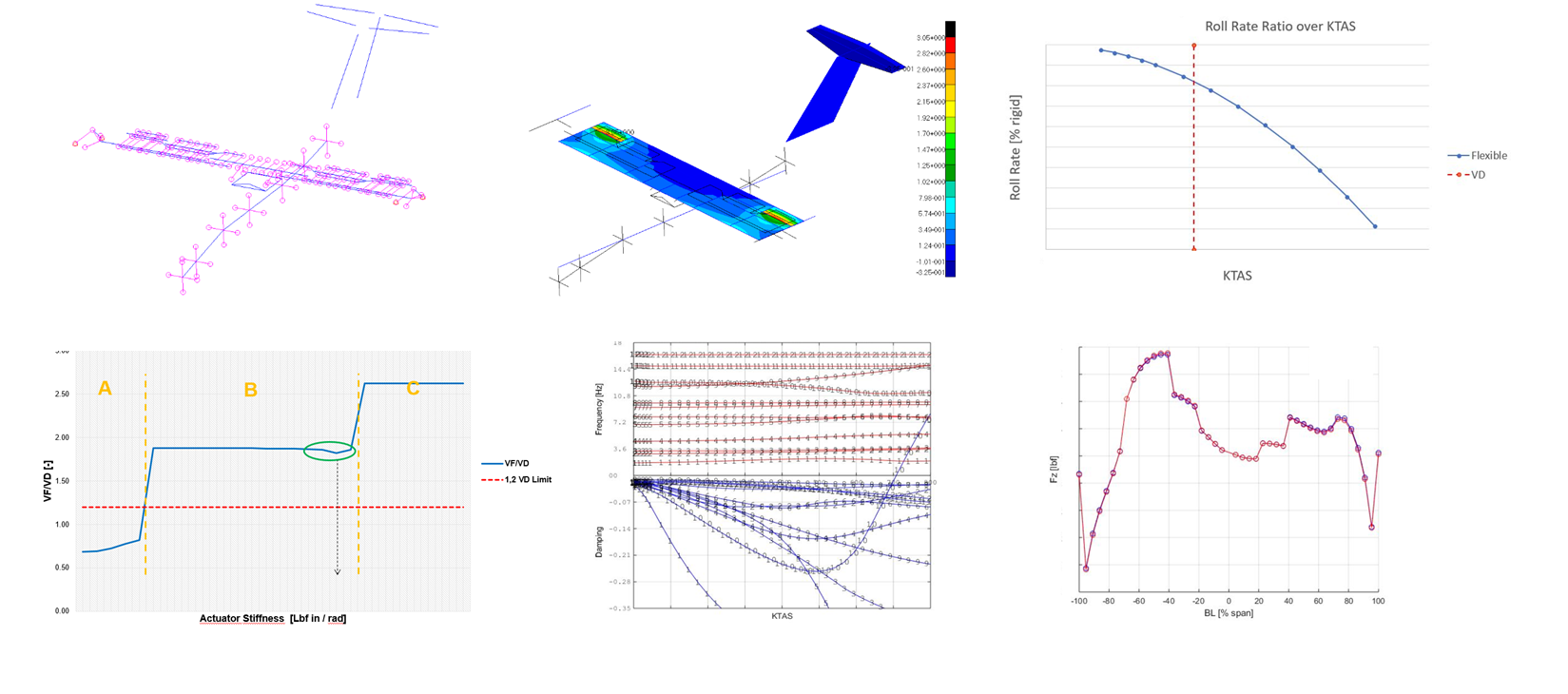Simulation
Simulating Aircraft response to design future aircraft
IBK can simulate aircraft response in all relevant flight phases to understand its behaviour and support design processes.
Throughout industrial, as well as public funded and co-funded research projects, IBK has developed a consolidated internal know-how on aerodynamic, aeroelastic and flight mechanics simulations, with both linear and nonlinear methodologies.
IBK has supported projects in the past two decades in the field of aircraft loads, aeroelasticity and flight dynamics simulations with several European customers (Dornier, Airbus, Cargolifter, Leonardo) and research institutions (DLR, ONERA, CIRA, ARA, CNR). We have a strong experience and all necessary tools for simulation-related tasks.
A strong focus of IBK´s simulation activities is on performing flight-physical simulations of aircrafts in various conditions. This includes in particular
- gust simulations
- manouevre simulations
- landing simulations

Generally, the target is to calculate loads acting on the aircraft for subsequent design activities. Flutter analysis can be performed by IBK as well.
IBK has own infrastructure to perform aerodynamic analysis on different fidelity steps:
- Linear potential theory (DLM) used for unsteady problems solved in the frequency domain (gust-loads, aeroelasticity)
- CFD-EULER and RANS code (TAU, ADINA) used for high-fidelity aerodynamic analysis

Apart from that IBK can simulate structural problems using state-of-the-art solver (NASTRAN, ADINA).
